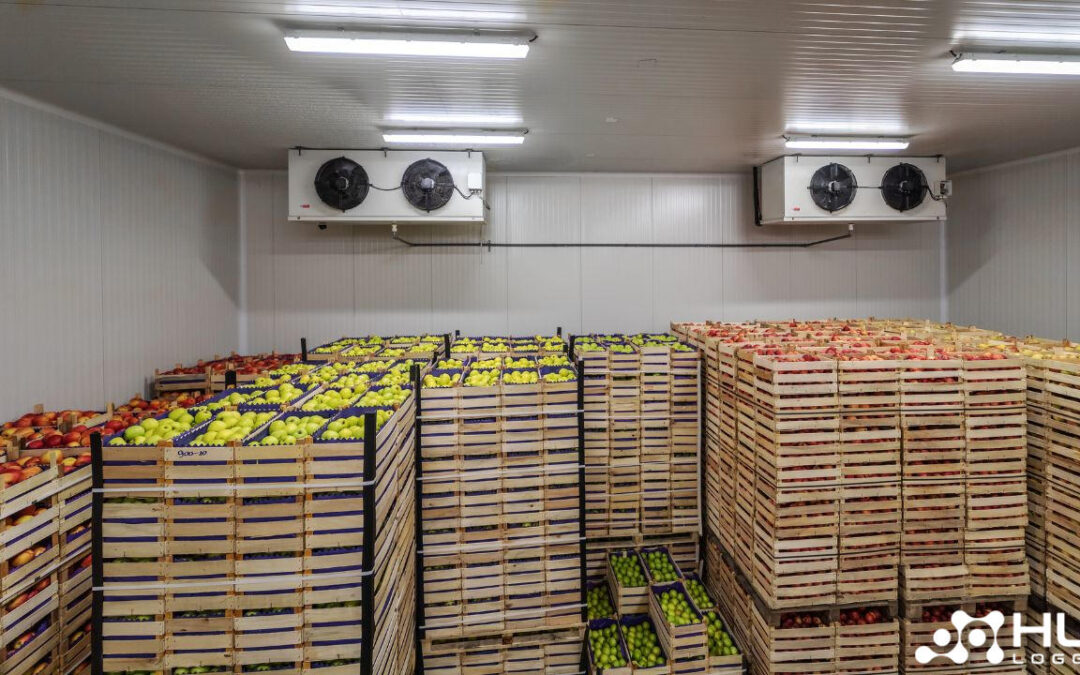Temperature-sensitive shipping requires careful cold chain logistics management. Cargo shipments for products such as medicines, chemicals, fresh fruits, meat, fresh vegetables, frozen foods, beverages, vaccines, insulin, hazardous materials, or live cell samples should indeed follow cold chain logistics rules.
All products that are sensitive to temperature must maintain their specific temperature range from the production process, storage, packaging, transportation, to delivery.
The shipping journey of these products must also occur under certain conditions, such as using gel packs or dry ice in their containers, transportation via refrigerated trucks, ships, or aircraft equipped with special temperature monitoring systems. This temperature-sensitive shipping must ensure that all sensitive products arrive at their destination in the same condition as when they left their storage location.
Global supply chain management has established cold chains with reliability, accuracy, and a focus on the details of each process through high logistical discipline. Before entering the shipping process stage, cold chain logistics providers will first align their understanding of temperature-sensitive goods with customers.
They will manage temperature-sensitive goods to ensure quality, product efficacy, and product safety throughout the many stages of the shipping process.
They will use sophisticated specialized equipment such as data loggers that help the personnel in charge control the right temperature and monitor it closely to ensure strict compliance. If they fulfill all these requirements, they will be able to uphold their commitment to consumers professionally.
Contents
How The Shipping Works
Temperature-sensitive shipping is the process of moving objects such as vaccines, medicines, perishable food, blood products, organs, flowers, tissues, and other pharmaceutical products from storage to the customer’s location. This shipment requires a special method to transport the goods so that the transfer is always within a certain temperature range during transportation.
The product must not be damaged during the shipping process. Therefore, refrigerated containers and the transportation vehicles that carry them must meet certain standards that match the condition of the product.
This shipping also has to face various potential hazards that can disrupt its cold chain system. These potential hazards include network signal interference that can temporarily stop data logger monitoring devices, power outages, human error, and equipment failure due to various factors. Therefore, it is important to check the track record of the supplier or equipment provider that you will use for temperature-sensitive shipping.
As a user of cold chain logistics shipping services, you must also be able to check several things, including the working method of this temperature-sensitive shipping. The first thing you have to do is check the product packaging to ensure it is adjusted to the appropriate temperature range. The best air temperature for temperature-sensitive shipping is usually between 2°C and 8°C.
Then the packaging must be airtight, with gel packs, thermal protection, bubble wrap, and special boxes containing dry ice (carbon dioxide). Next, you can prepare a number of temperature monitoring devices for the packaging. You can use disposable, reusable, or 4G real-time reusable data loggers that can provide real-time monitoring.
Don’t forget to include complete documents that outline storage requirements and emergency contact information. Meanwhile, as you prepare all the packaging needs, you also need to share information on the correct way to handle the product with your shipping partners.
Last but not least, make sure that the cold chain logistics management you trust uses the right equipment, including refrigerated trucks, air cargo, warehouses, and other facilities.
The Importance of Maintaining Product Quality with Temperature-Sensitive Shipping
Reliable temperature-sensitive shipping is essential for businesses that consistently transport temperature-sensitive goods. Product quality will remain in good condition if the correct shipping and monitoring processes are carried out.
The good quality of temperature-sensitive products relies heavily on cold chain logistics management, starting from the production process, storage, packaging, transportation, to delivery. Temperature-sensitive shipping can prevent issues such as product loss, product quality degradation throughout the journey, and expensive insurance claims.
It is very important to maintain product quality throughout the shipping process so that the product reaches consumers or patients in a condition that matches the claim and is safe. The slightest deviation from the temperature range suitable for a type of item can cause the product to rot, decrease its efficacy, and cause health hazards.
Without strong cold chain management, the risk of temperature changes can increase. This can cause damage to goods resulting in major financial losses. Moreover, you will not be able to sell vaccines or pharmaceutical products that have been damaged due to poor handling in temperature-sensitive shipping.
Shipping products that comply with cold chain shipping standards will also comply with regulations set by the FDA, WHO, and other global regulatory bodies to ensure that products remain safe for consumers.
Effective cold chain shipping will greatly affect sustainability efforts because it will reduce waste. Temperature-sensitive shipping will prevent products from deteriorating to the point of producing high levels of waste. This is also important in building customer trust and loyalty by ensuring excellent product quality when it reaches consumers.
Temperature-Sensitive Shipping Solution

HLY Technology Co., Limited, as a leading supplier of professional devices and Internet of Things (IoT) solutions in the cold chain sector, will help your business prioritize sustainability by utilizing temperature-sensitive shipping.
We include superior products such as our disposable or reusable data loggers in every product packaging. You can also take advantage of our M371 and M381 data loggers that can monitor temperature in real-time with high-capacity sensor technology.
You will be able to increase customer satisfaction and trust in this competitive market by always successfully delivering quality products. Customer satisfaction is the key to business success, and temperature-sensitive shipping plays a very important role.

